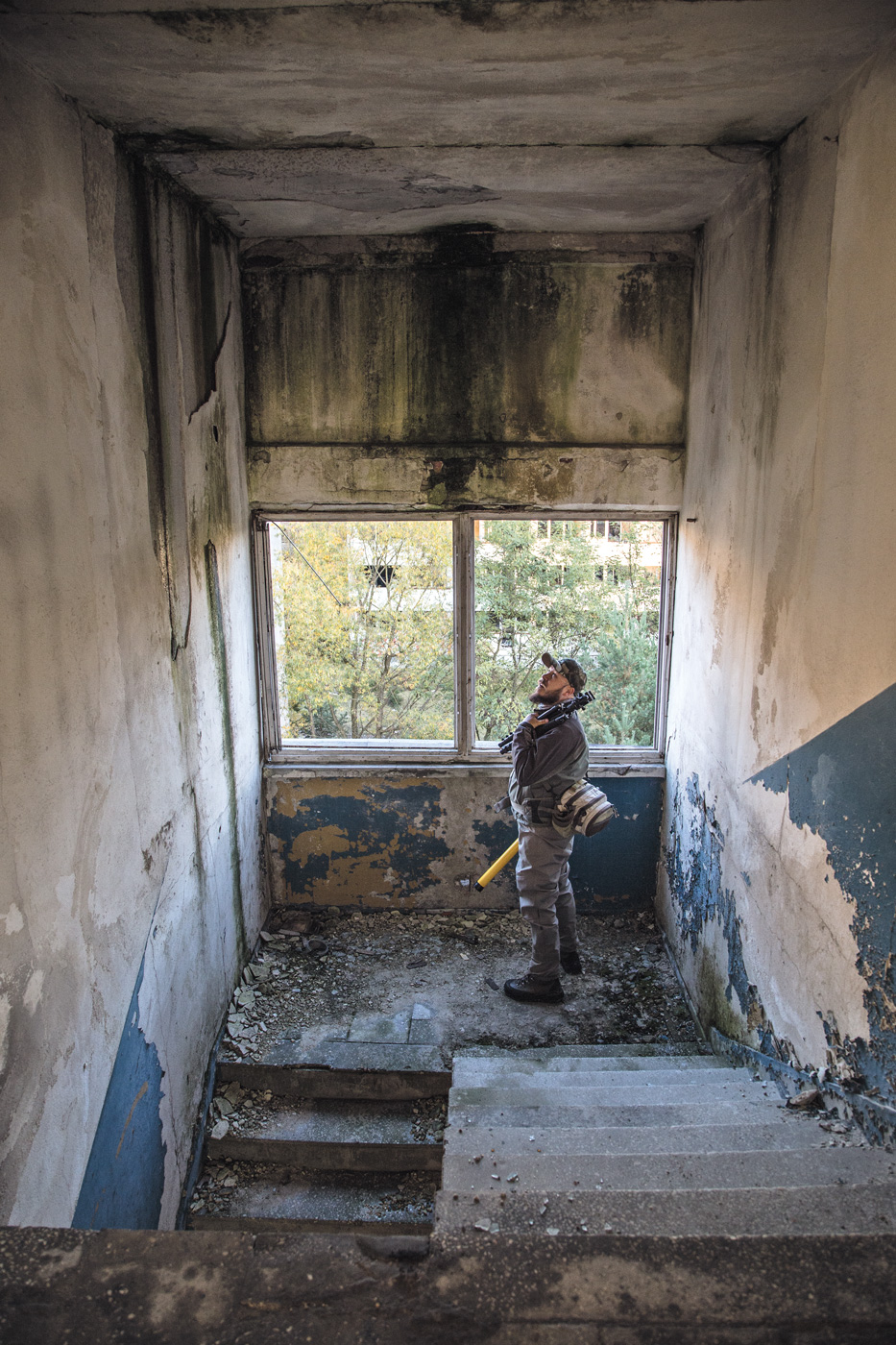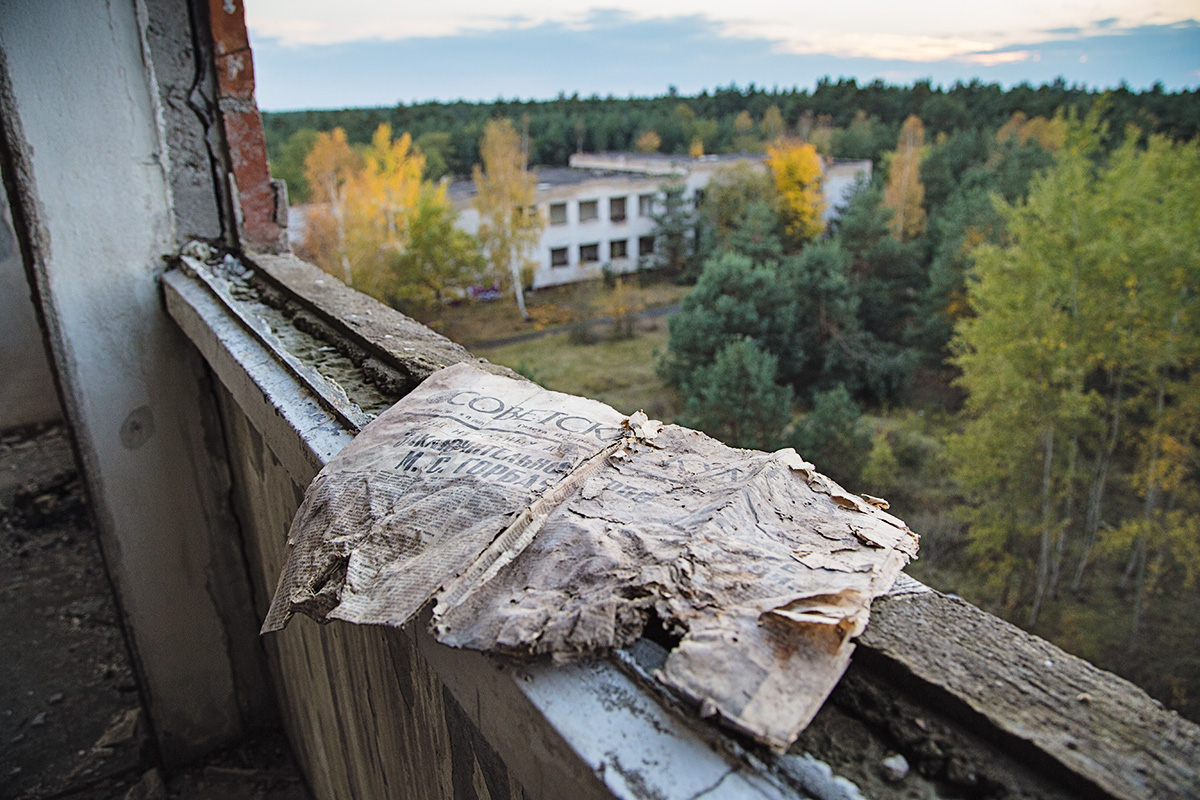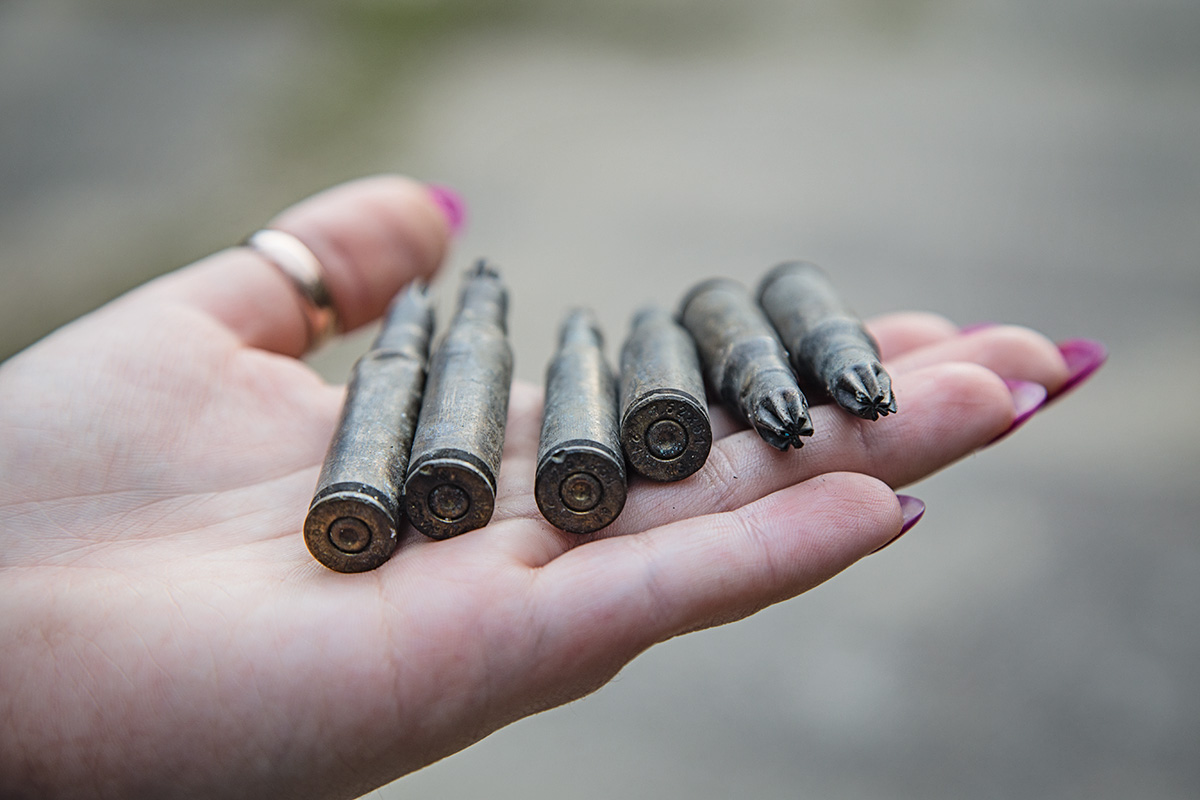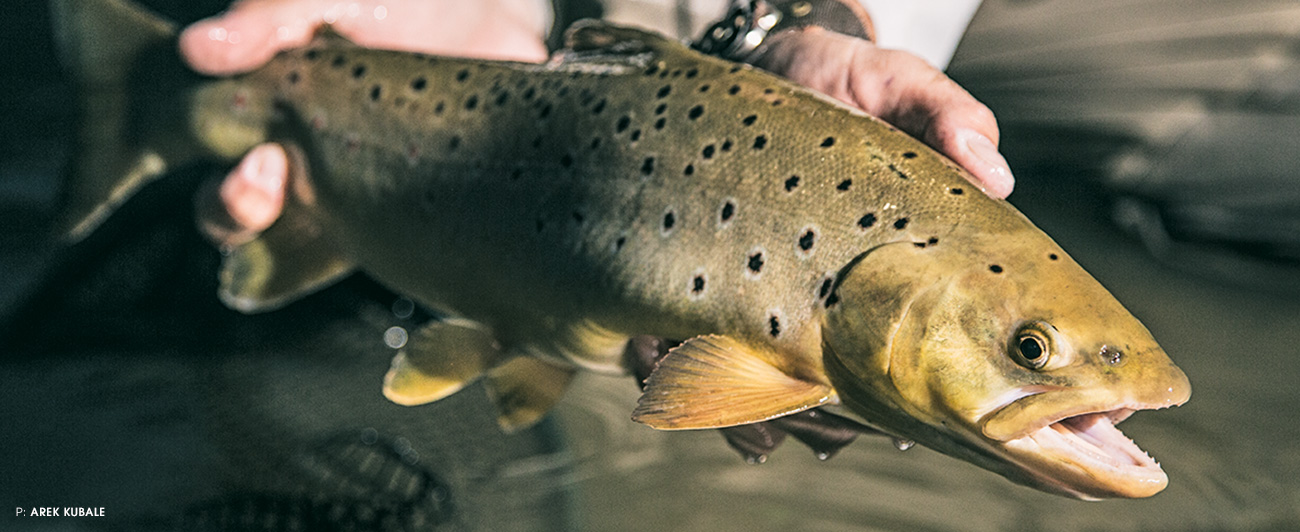Conservation
GHOST TOWN
BEHIND THE GATES OF “LITTLE CHERNOBYL”
above Ghost-town brown. Despite it’s complicated history, the Bóbr’s murky waters still hide a good population of trout. Photo: Arek Kubale
The view from the edge of Poland’s Bóbr River is overwhelming. I’m standing on the remnants of a bridge demolished by the retreating German army at the end of World War II. The water, flowing from the Sudetes mountains is dark and moving at its own languid pace, but I’m standing at the gates of a different world. A Cold War ghost town. Pstrąże. Once the prohibited realm of the Soviet Red Army, “Little Chernobyl” stands wide open before me. I have a fly rod and not much else with which to defend myself.
The story of Pstrąże begins in 1305. Located in southwest Poland—today’s Lower Silesia—the village was known for cattle farming and its blacksmith trade for hundreds of years. But nothing lasts forever. Europe’s wars intruded on this secluded village of about a thousand souls. Once rural and scenic, it was occupied by the German army that assaulted Polish borders in September 1939. During World War II, Pstrąże transformed into a German military base. In February 1945, with the war staggering to a close, the Soviets advanced, forcing a dramatic and swift German retreat after a fierce tank battle. The Russians built an even bigger town, settling soldiers and their families. Besides the preexisting apartment blocks, the Soviet military made use of a kindergarten, two schools and even a small cinema. At its height, Pstrąże’s total population may have reached 20,000.
Once the Red Army had occupied the town, Pstrąże was never the same. Suddenly, Pstrąże became officially nonexistent—a ghost town, invisible, removed from official maps. Poles had no access. Barbed-wire fence and soldiers with guard dogs protected the surrounding area. Now we know why. This hidden village by a slowly moving river was to become a Soviet nuclear base, its deadly weapons pointed west. People gossiped about what they called the “Little Soviet Union,” but nobody was sure what was behind the gates of Pstrąże.
The town’s name, Pstrąże, is very similar to the Polish word pstrąg, which means trout. The founders of the village knew well the gold and red-speckled fish swimming in the Bóbr’s murky waters. Now, with this water just below my feet, I squint and see the shapes of fish.

above Three decades ago, Pstrąże was still full of Russian soldiers and their families. Now everything is silent and still, and only the run-down walls seem to speak. Photo: Agnieszka Kubale
We move slowly toward the river on a steep bank. As I make my first cast, I notice a yellow no-trespassing sign. Below the Polish warning is another—in Russian. How long has it been standing there? Years? Decades? My Chernobyl ant drifts downstream and drags in the current. Normally I would recast, but the surroundings are too compelling. A second later the fly disappears. Below the olive water, sunbeams burst on silver scales—a chub—a typical lowland species in Poland. It’s a fine fish but I feel a bit disappointed. Fishing a place named Troutville obliges one to catch a brown.
Because of its location defining shifting and contentious European borders, the Bóbr has always been a silent witness to history. During the Battle of the Bóbr in 1813, 2,000 of Napoleon’s soldiers lost their lives trying to pass the strong currents of the swollen river. In the summer of 1940, in the nearby village Trzebień—just three miles south of Pstrąże—a subcamp of the Gross-Rosen concentration camp was built. Another episode of human misery began. But now we’re just fishing, and almost nothing remains of this river’s complicated history. In the distance, Agnieszka is landing a nice brown. The glimpses of golden scales and sparse red spots make for a fine moment. We fish until the late afternoon and each land a few more browns. Even though we can see brown and olive mayflies, we keep casting terrestrial foam patterns. Chernobyl ants just feel like the fly to use here.
With a few hours of light remaining, we shoulder backpacks and head downriver. After a short hike, the trees become sparse and we can see concrete shapes in the distance. Are these the military barracks? Is this the Red Army ghost town?
Eight large apartment blocks jut high above the birch forest. Trees grow on the rooftops, their branches sticking through empty windows. The heavy concrete walls are full of bullet holes. We can’t resist entering one of the buildings. I go first while Agnieszka holds the rods. A minute later she joins me. We dive into a different world—a world of Russian soldiers and their families living there just three decades ago. With every floor we climb, we see more—old newspapers, dishes, toys. Time stops and we can see how silence sounds. Everything is still. Agnieszka is staring through the window at green birches. We hear nothing but the birds.

above Climbing the post-Soviet apartment block’s staircase is not necessarily safe. However, the higher you climb, the more mementos you can find. Old newspapers packed with Cyrillic script still tell stories from decades past.Photo: Arek Kubale
Suddenly, Pstrąże became officially nonexistent—a ghost town, invisible, removed from official maps. Poles had no access. Barbed-wire fence and soldiers with guard dogs protected the surrounding area. Now we know why.
The Soviets used this garrison for storing nuclear weapons during the Cold War. With some help from the locals, we managed to find huge rocket hangars made of concrete and steel deep in the woods. We try to find evidence of radioactive pollution, but so far our Geiger counters read zero. However, our surveys are small and after decades of silence, the Polish people still have no idea what this land may be hiding.
We return to investigate a few more times. We don’t fish the river again after learning that during the Soviet period the town’s name was changed to Strachów (CTpaxyB), which derives from word strach—Polish for “fear.”

above Machine gun cartridges are easy to find in Pstrąże, even on the banks of the Bóbr. Photo: Arek Kubale
Poland’s largest ghost town shows the unceasing power of nature. The surrounding woods are slowly absorbing the settlement. Trees grow out of every cracked wall and roofless structure. Wildlife thrives, overpowering human mistakes of the past. The river still holds trout. Deer and other forest fauna seem to have forgotten about Pstrąże’s legacy.
In spring 2017, Polish military authorities decide to demolish the Russian part of the town the locals now call “Little Chernobyl.”
We may never know what went on here. We many never know what’s buried here—what scars have been left. The waters of the Bóbr still flow patiently, hiding silver chubs and dark-gold trout, only a few hundred yards from what remains of Pstrąże.
This story originally appeared in The Flyfish Journal Volume 9 Issue 2.
